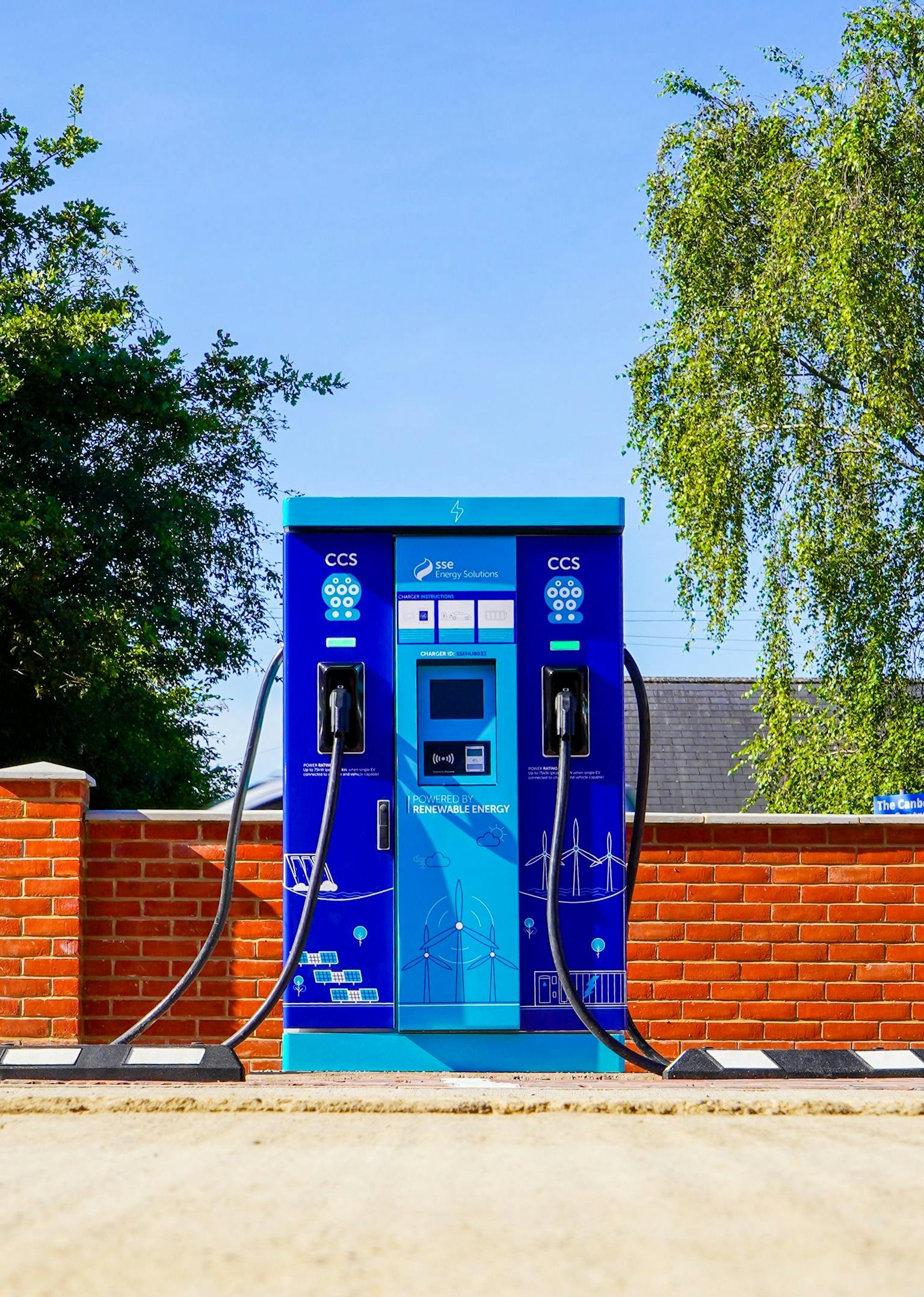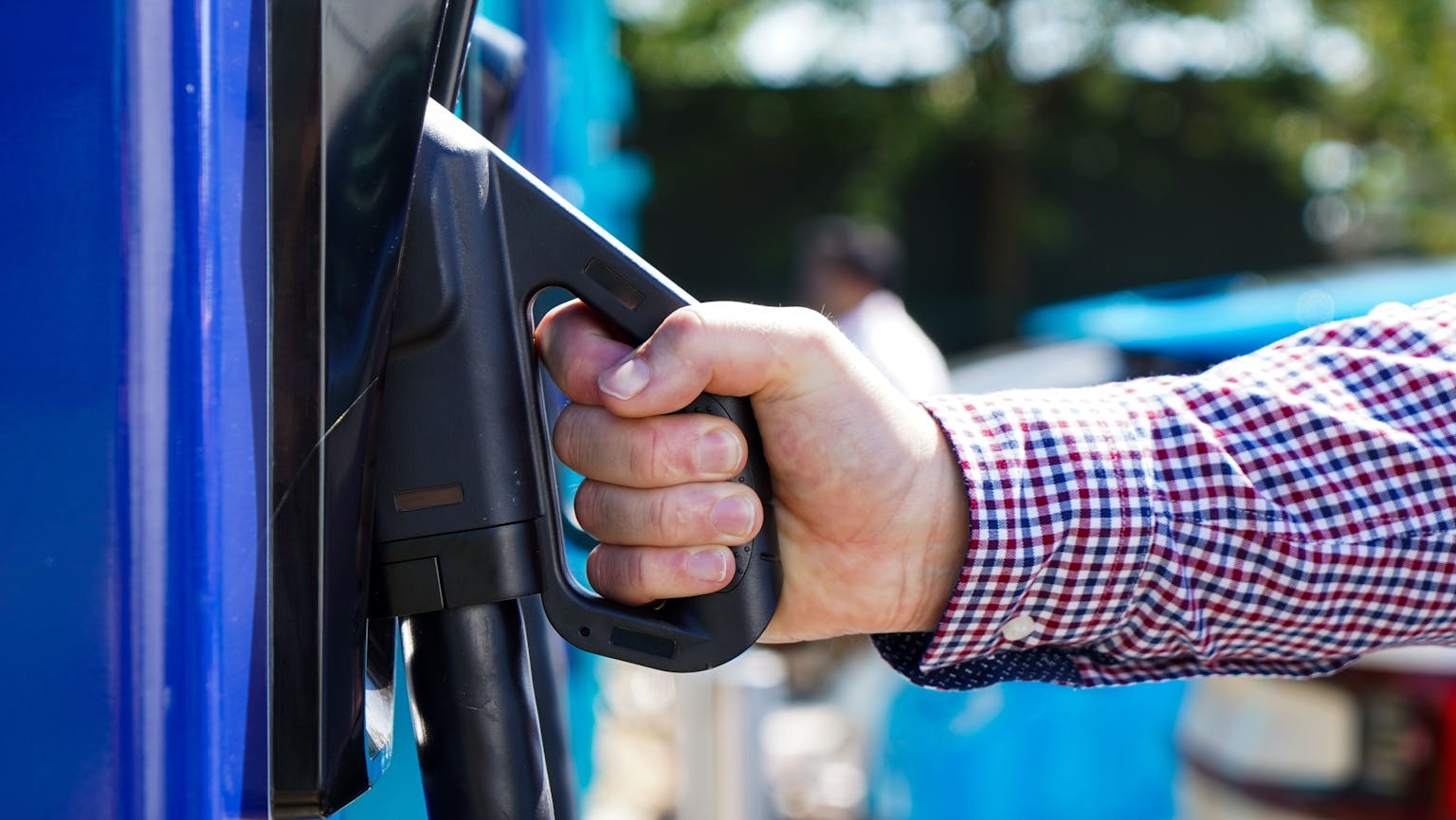Charged: 15 questions with... SSE
To encourage the UK's net zero goal by 2035, the charge point operator, SSE, plans to build 500 ultra-rapid EV charging hubs, powered by renewable energy, by 2030.
Their commitment to increasing the charging infrastructure, aiding the increasing demand, is one of the many reasons we're excited to be welcoming them onto the Electroverse!
We sat down with Simon Pickett, Head of EV Assets and Technology (SSE Energy Solutions), to speak further about SSE and their future within the public charging network.
Let's get plugged in...
Why did SSE decide to take the plunge into the public charging world?
We had been developing our hubs business behind the scenes for some time but only launched our first public charging site at Castlebank in Glasgow, September 2022. With previous experience in delivering EV Charging Infrastructure at many bus depots across the UK, we aren’t technically new to the EV market and knew how we could bring this expertise to supporting both people and businesses in their transition to electric in a more public setting.
With huge demand amongst the public for EVs right now, we could see the growth outpacing the necessary supporting infrastructure and naturally saw how the skills and expertise within our business could support in this net zero movement.
Our goal is to be a leader in delivering net zero objectives, supported by our growing team of experts who are building and operating public charging hubs as we speak. We believe we have the capability to produce a high quality hubs experience for domestic and fleet users across the UK and Ireland.
SSE’s partnership with global commercial real estate investor, M7 Real Estate, was interesting to read about. What does this partnership mean concerning the locations of SSE charging locations?
This is a very exciting partnership for us as M7 are such a renowned and respected business; it is indicative of the type of partnerships we strive for. They maintain a portfolio of retail parks with their client, Oxford Properties, and we saw these as the perfect locations for our hubs.
Retail parks are the ideal place for our ultra-rapid charging hubs as customers already come and park in such places regularly. There is almost no change in behaviour and no need to drive out of the way to top up. Customer and fleet users can put their vehicle on charge, and then carry on shopping or working, then by the time they’re finished, they can go about the rest of the day with vehicle charged back up again.
We have currently launched hubs at 5 of these retail parks, in Great Yarmouth, Ipswich, Hayes, Colchester and Poole to date, with a further 15 going through planning at the moment. These will be situated all over the country, showcasing our desire to grow the network far and wide.
How many chargepoints does SSE currently operate & where in the UK (or further afield!) are you looking to expand?
Currently we have 35 publicly accessible chargers across 7 live hub sites but this is going to grow into double digits in the coming couple of months and should increase significantly by the end of 2024. By April, we should have our first operational site in Ireland which is very exciting!
As EV adoption continues to accelerate, the demand for more chargers on the public network also increases - how will SSE help?
As mentioned before, with our experience in the market and capability through our team of experts, we believe we are perfectly positioned to support with this increasing demand. As we build our supply chain and partners, we have ambitions to launch 500 hubs by 2030 all across the UK and Ireland, whilst looking to employ new and ambitious innovations to make these hubs the best they can be.
As SSE moves forward with its EV charging hub strategy, what would you consider to be the most exciting element to the plan?
The most exciting part for me is watching the market develop and then reacting/helping to solve the problems that we come across in order to drive net zero forward. Ensuring that customers and fleet drivers visiting our sites can be on their way again without any issues.
In a technology sector, change happens fast and often comes from an unexpected direction and keeping up with this is fascinating to me. Working for a big net zero focussed business and balancing our internal processes and larger scale activities with the fast pace of the wider EV sector is really challenging at times but its what makes me tick. The question is always “how can I make a positive difference and how can I work within SSE Energy Solutions to do this?“. Engaging and collaborating with our peers across the industry (which we do all the time) also helps us with this.
As transport accounts for almost a third of CO2 emissions in the UK, decarbonising road travel via EVs is essential. Can you tell us more about SSE’s commitment to net zero on the roads?
One of our key focuses within SSE Energy Solutions is supporting domestic drivers and fleets, large and small, to electrify their road travel by putting charging in places that is both convenient and of a suitable power rating. We are moving into the HGV sector, having announced our first site which is going into construction at Tyseley Energy Park in the West Midlands, and we expect to continue to develop a large number of new sites across the UK and Ireland to support net zero ambitions across all our road transport networks.
With the HGV sector covering only around 1.5% of all vehicles on British roads, it accounts for a much larger share of the country’s transport emissions at around 20%. Decarbonising this sector will not only have a huge impact on the UKs GHG emissions but also improve air quality for all.
In your opinion, what’s the future looking like for faster public charging speeds?
It's fair to say that we expect charging speeds to increase for the next few years but there will likely be a plateau once battery efficiency reaches a certain stage and when charging speeds are sufficient as to not be inconvenient to users. At present all our DC chargers are a minimum of 150kW and, from next month our highest power chargers will be 360kW units. 400kW is likely to be the peak for the next few years in the domestic market and we are keeping an eye on HGV charging which is likely to reach megawatt charging options within the next decade.
With organisations like ChargeUK promising the rapid acceleration of public EV chargepoints in the coming years - what’s the vision for SSE in 5 years?
We are actively involved with the rapid acceleration of charging networks across the UK and Ireland already and are collaborating with a number of businesses, including competitors and supply chain partners We expect to continue in this direction into and beyond the next 5 years. Long-term investment and sustainable business practises are critical in giving businesses and the public confidence to go electric as well as securing the long-term investments needed to keep things operating. As founding members of the ChargeUK trade body we remain aligned with their ambitions and believe they are doing a great job in helped to ensure the CPOs, EV businesses and government bodies are as aligned as they can be.
We expect to have between 300-500 sites open and servicing customers needs over the next 5+ years and suspect a lot of exciting technology and market developments will occur during this period too.
Why are partnerships like SSE and Octopus Electroverse crucial to the public charging infrastructure?
Access to charging infrastructure should be equitable, simple and commonplace. Relationships between all the parts of the ecosystem are critical to the success of this. Partnerships such as ours are a major stepping stone in ensuring that specific groups of customers know they have reliable provision where they need it and when they need it. The Electroverse card provides a simple payment solution via home energy bills and saves the need for additional credit cards or separate payments.
What’s your dream electric vehicle?
The Rimac C1 is my dream EV.
What’s the longest journey you’ve completed in an EV - and can you share the total mileage?
I regularly travel across the UK to support the opening of sites. I think my longest single trip was from Manchester to Sussex which was around 300 miles. I stopped for a break halfway through and the car was re-charged for the remainder of the journey, long before I’d used the facilities and got a fresh cuppa.
Do you have an EV life hack to share with the EV community?
Pre-heating the car remotely while it’s still plugged in and before you go out is probably the most useful for me. I have two young children and getting out of the house in the morning is already a challenge. Being able to use my phone to just turn the heating on 5 minutes before means a nice warm comfortable (and de-iced) car without any impact on range. I do this separately to pre-conditioning for a long journey.
What advice would you give to someone who is looking to embark on their EV journey?
The main thing to consider is “what do you actually need to do with your EV?” – there are lots of negative stories shared about issues with range or failed batteries but the reality is, nothing really changes in terms of starting an EV journey vs an ICE journey.
Do you need a small or large car? Do you travel long distances often? Do you have parking at home or not? The charging locations and the vehicles are there to be accessed. Both new and used vehicles give different benefits (although I appreciate some things are still quite expensive to buy new) and the total cost and long term requirements will vary. Make sure you have considered things like roaming networks (e.g. Electroverse!) so you have easy and simple access to charging wherever you go. Some advice I got from an industry buff a while back was “go and test a public charger before you do a long journey so you know how it works”, this means that its far less of concern when you do need one urgently – believe it or not most chargers are very easy to use and are designed to be that way
What advice would you give someone looking to use an SSE charging location for the first time?
We hope that the sites are set up to make them as easy to use as possible. I would suggest checking the process you use to finish the charging session at the start while waiting for the session to take place so you don’t add any time at the end.
And finally - an EV etiquette question - what would you say is the golden rule to using a public charger?
This is a really easy one for me – use it when you need it and then make space for others even if this means moving to a different part of the car park. If you are no longer charging or are over 80% charged (meaning the charge rate will usually really slow down) and you don’t need to go a long way there may well be other people who have a long drive left to complete, tired children in the car or work to get on to next…








